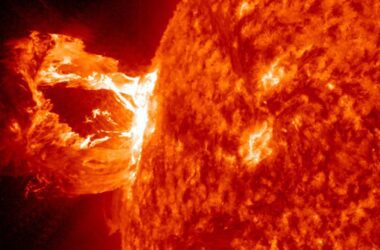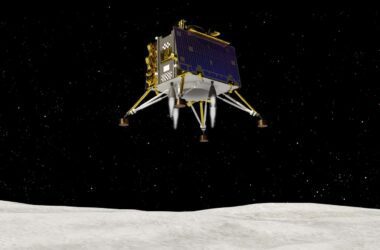Chandrayaan-3 is on its way to the moon
ISRO Official
Chandrayaan-3, India’s third lunar probe, was successfully launched. The spacecraft’s mission is to investigate the lunar south pole, where water deposits could one day make a lunar outpost feasible.
The Indian Space Research Organization’s Chandrayaan-3 (named after the Sanskrit word for “mooncraft”) was launched from the southern state of Andhra Pradesh at 2:35 p.m. local time on July 14. The rocket it rode was a Launch Vehicle Mark-III.
In 2019, a software error forced the lander on the failed Chandrayaan-2 mission to fall into the lunar surface. The mission’s Vikram lander and the six-wheeled rover it was planned to deploy, dubbed Pragyan, were destroyed on impact before they could investigate the moon’s south pole.
Similarly, the Chandrayaan-1 mission had a lunar orbiter and a probe meant to crash into the Moon at high speed, again with the south pole in mind. India is now the fourth country to plant its flag on the Moon after the accomplishment of this mission.
Only three countries—the United States, the Soviet Union, and China—have accomplished a safe lunar landing. In April, a private attempt by a Japanese start-up failed when it too smashed into the surface at high speed.
The Chandrayaan-3 mission will be similar to the last one, but this time the orbiter won’t be needed because the lander and rover will be able to communicate directly with Earth. Officials predict that the mission will touch down on the moon on August 23 or 24. After then, the lander will separate and fall out of orbit, destined for the lunar surface. The rover will only survive for around two weeks after it is launched into the lunar environment.
When asked about the significance of July 4, 2023, for India’s space programme, Prime Minister Narendra Modi tweeted, “4th July 2023 will always be etched in golden letters…” The aspirations and dreams of our country will be carried by this extraordinary expedition.
FAQs
Q1: What is the objective of India’s Chandrayaan-3 mission?
A1: The Chandrayaan-3 mission aims to investigate water deposits at the Moon’s south pole, which could potentially make a lunar outpost feasible.
Q2: When was the Chandrayaan-3 mission launched, and from where?
A2: The Chandrayaan-3 mission was successfully launched on July 14, at 2:35 p.m. local time, from Andhra Pradesh, India.
Q3: What happened during the Chandrayaan-2 mission?
A3: The Chandrayaan-2 mission faced a software error, leading to the lander’s fall on the lunar surface. Both the Vikram lander and the rover, Pragyan, were destroyed before they could explore the moon’s south pole.
Q4: How does Chandrayaan-3 differ from the previous missions?
A4: Chandrayaan-3 will not require an orbiter since the lander and rover will communicate directly with Earth. The mission aims to safely land on the moon’s surface and investigate the south pole.
Q5: What significance does July 4, 2023, hold for India’s space program?
A5: Prime Minister Narendra Modi tweeted that July 4, 2023, will always be etched in golden letters as the day when India’s extraordinary expedition took place, carrying the aspirations and dreams of the country.







